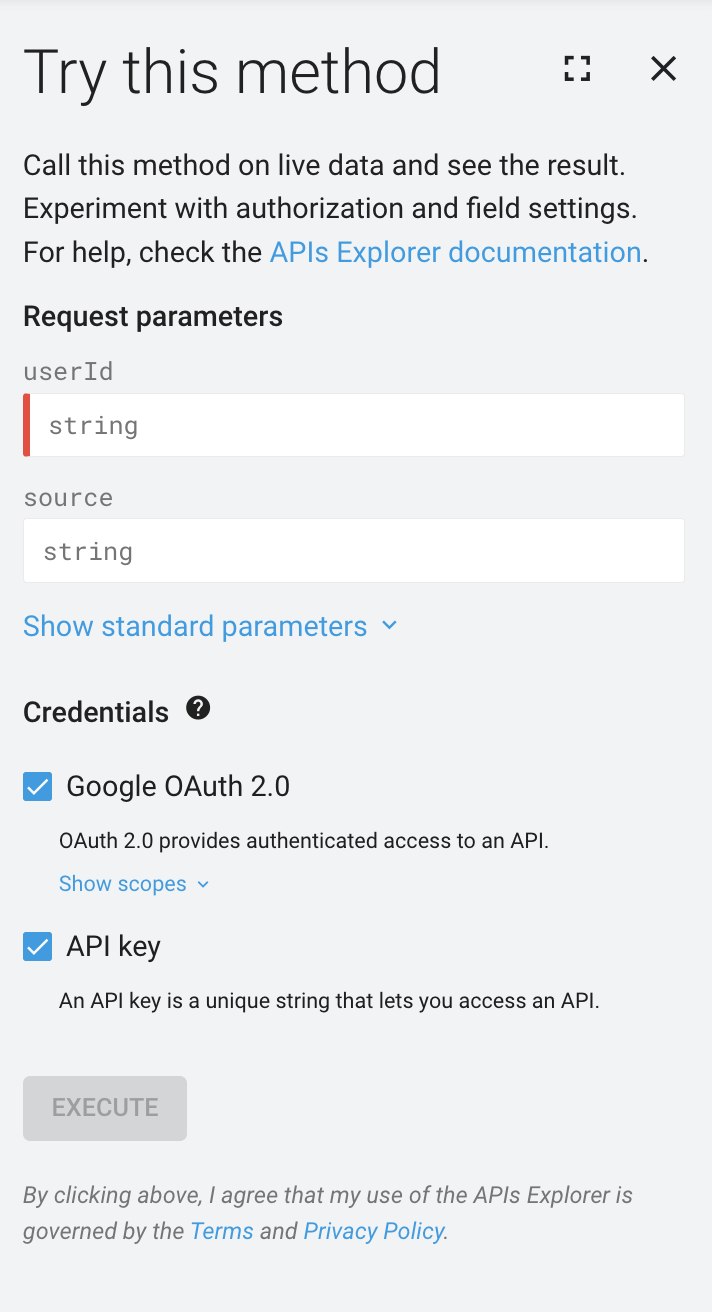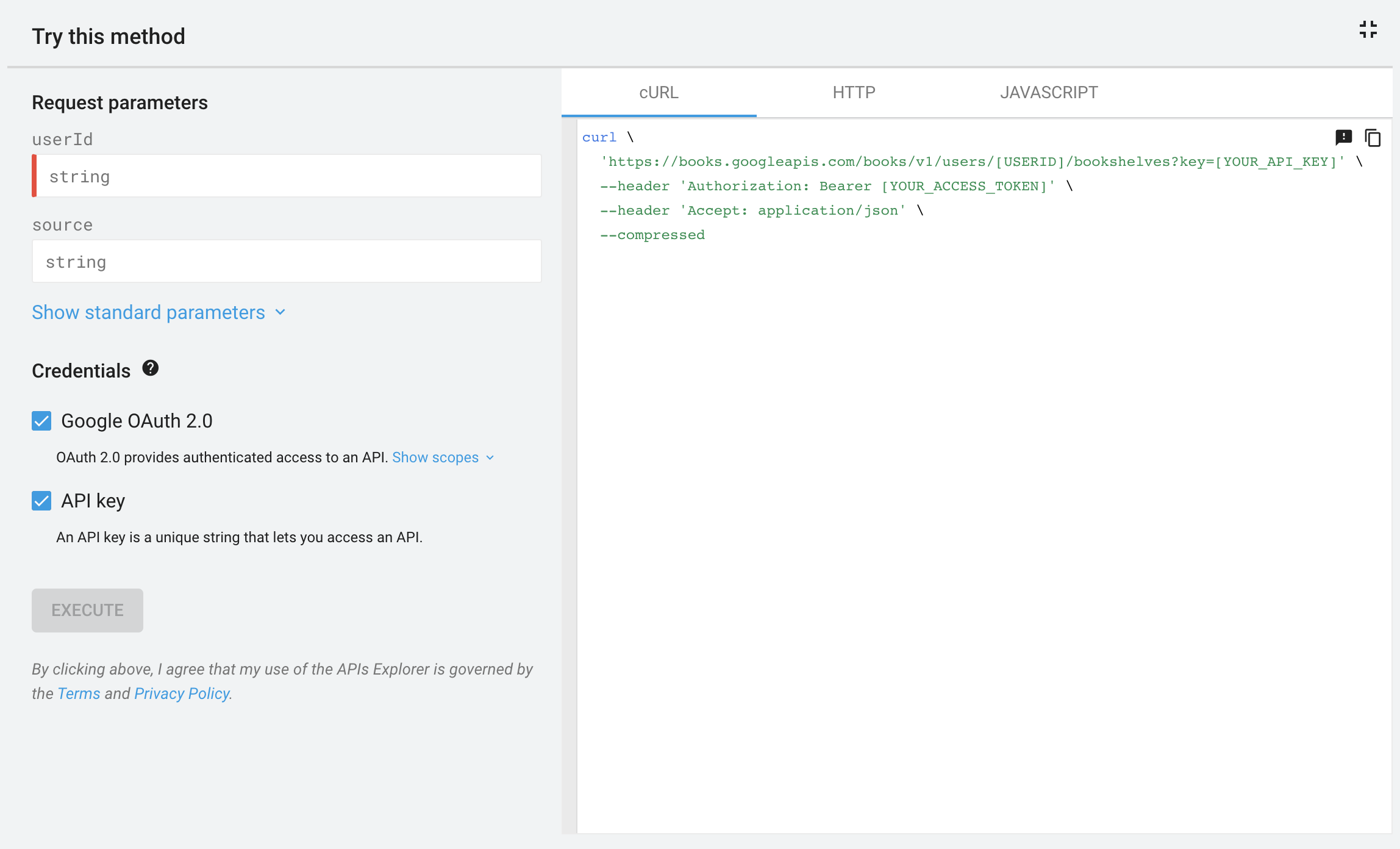Google API Explorer adalah alat yang tersedia di sebagian besar halaman dokumentasi metode REST API yang memungkinkan Anda mencoba metode Google API tanpa perlu menulis kode. APIs Explorer bertindak berdasarkan data sebenarnya, jadi berhati-hatilah saat mencoba metode yang membuat, mengubah, atau menghapus data.
Menggunakan direktori
Untuk melihat daftar Google API yang dapat Anda jelajahi, jelajahi Direktori Penjelajah Google API. Daftar ini berisi link ke dokumentasi referensi API untuk API yang didukung. Ikuti langkah-langkah di bawah ini untuk mempelajari API:
- Buka Direktori API Google Explorer.
- Pada kotak penelusuran di bagian atas, masukkan nama API yang ingin dijelajahi.
- Klik nama API tersebut. Tindakan ini akan membuka dokumentasi referensi API.
- Di sebelah kiri, klik metode yang ingin Anda gunakan di navigasi.
Di sebelah kanan, temukan panel berlabel "Coba metode ini." Lihat di bawah untuk mengetahui detail tentang cara menggunakan panel samping APIs Explorer dan cara memperluasnya ke panel APIs Explorer layar penuh.
Menggunakan panel samping


Secara default, APIs Explorer muncul di sisi kanan layar dalam dokumentasi referensi API untuk metode yang didukung.
Anda dapat menyesuaikan dan berinteraksi dengan bagian berikut di panel samping Explorer API:
- Parameter permintaan, jika diperlukan oleh metode.
- Isi permintaan, jika diperlukan oleh metode.
- Kredensial, untuk menguji metode tersebut dengan berbagai jenis dan cakupan kredensial.
- Tombol Execute, untuk menjalankan metode menggunakan parameter dan setelan yang Anda tentukan.
- Hasil, hanya ditampilkan setelah menjalankan metode.
Menggunakan panel layar penuh


Di panel samping APIs Explorer yang diciutkan, Anda dapat mengklik Full screen
untuk memperluas APIs Explorer. Panel
layar penuh menampilkan panel tambahan yang berisi contoh kode,
respons application/json, dan respons HTTP Mentah.
Autentikasi
APIs Explorer menggunakan kredensialnya sendiri untuk membuat permintaan. Anda tidak dapat menggunakan kredensial kustom dengan APIs Explorer.
Format data
APIs Explorer hanya mendukung JSON untuk respons dan payload permintaan. Meskipun API Anda mendukung format data lain, format ini tidak berfungsi di API Explorer.
Langkah berikutnya
- Pelajari cara menampilkan APIs Explorer dan menjalankan metode.
- Pelajari cara menguji metode menggunakan kredensial dan cakupan yang berbeda.
- Pelajari cara menjalankan kode contoh APIs Explorer secara lokal.
